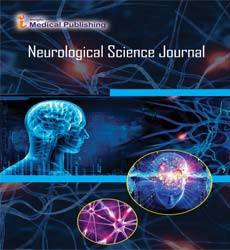Reach Us
 +447897072958
+447897072958
Use of new technologies on child neuropsychology: Evaluation of sustained attention with virtual reality and cognitive intervention with artificial intelligence
Visit for more related articles at Neurological Science Journal
Abstract
These presentation focus on our work on neurodevelopmental unit evaluating sustained attention in children from 6 to 14 years with AULA Nesplora. This is a software focused on the evaluation of sustained attention through a CPT paradigm in a school environment. AULA not only evaluates the tendency to distraction, deviation of the focus of attention and motor activity. It also measures auditory and visual attention, offering valuable information for both diagnosis and treatment prescription. This software its very attractive to the child and guarantees their cooperation. In addition, being based on a situation similar to reality, the professional can get a very real idea about the child's behavior. Likewise, at the level of cognitive intervention, use is made of the Sincrolab kids platform. Sincrolab is a training platform aimed at the recovery and development of cognitive abilities. It is a personalized, standardized and scientifically validated stimulation system focused on the educational and health field. Also, this platform its fed with the results of the neuropsychological evaluation and modified with the support of artificial intelligence. Both in the field of evaluation and rehabilitation, it is necessary to support ourselves from the constant development and evolution of new technologies, without neglecting the analytical capacity of the clinician. However, being able to rely on technologies such as artificial intelligence and virtual reality to obtain more reliable results and the modification of therapy programs based on the capacities developed by the patient in real time and when it is not possible for patients attend face-to-face therapy sessions as in the case of the current situation in the COVID 19 pandemic. On this presentation we display the theory on which these softwares is based, on which cases we use them, the results we get of them, and how our patients behave.
Select your language of interest to view the total content in your interested language
Open Access Journals
- Aquaculture & Veterinary Science
- Chemistry & Chemical Sciences
- Clinical Sciences
- Engineering
- General Science
- Genetics & Molecular Biology
- Health Care & Nursing
- Immunology & Microbiology
- Materials Science
- Mathematics & Physics
- Medical Sciences
- Neurology & Psychiatry
- Oncology & Cancer Science
- Pharmaceutical Sciences
